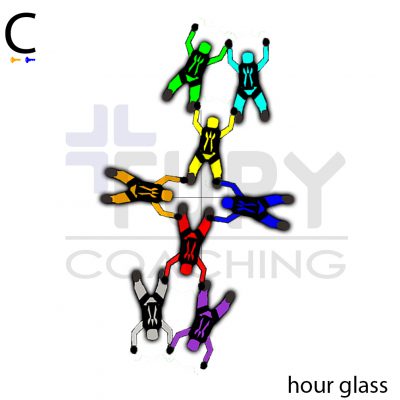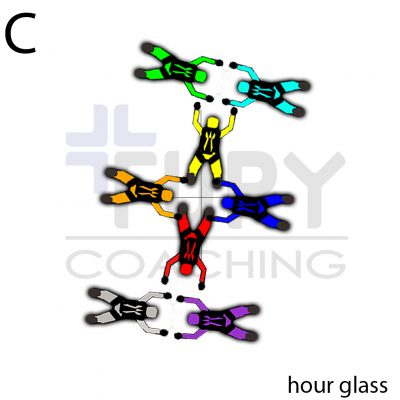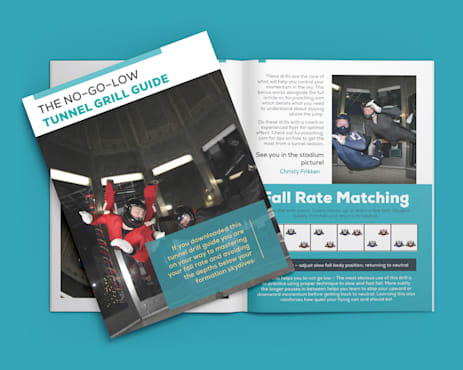8-way Basics: Shared Keying
Thursday, August 29, 2019

Keying is the process of checking the formation for completeness and indicating it is time to move. This process is pretty simple in 4-way where usually one person can easily see or feel every grip. In 8-way one person keys are the exception since a single individual does not often have a perfect view of everything. Even with a full view, it is often slower for a single person to visually verify a full formation.
This is a short series of articles that will help you break down and understand how 8-ways are built. While focusing on the formations in the competition pool, the tools shown here are highly transferable to general formation skydiving.
8-way Basics: Finding your slot
8-way Basics: Finding your clone
8-way Basics: Finding the centers
8-way Basics: Build the center first
8-way Basics: In-facing strategy
8-way Basics: Staged setups
8-way Basics: Round formations
8-way Basics: Fall rate
8-way Basics: Shared keying
8-way Basics: Line between point and tail
8-way Basics: Block inters
Two Person Keys
Therefore, two-person keys are frequent in 8-way. The most common keying pair is the Inside and Outside Center. They typically check their dominant direction (Perris Moxie always chose the right side, but your mileage may vary). Once the side of the formation they are in charge of is complete they look back to each other. Upon mutual eye contact, the pair keys together to signal moving on.
First Build the Center
One of the tricky aspects of double keying is the Centers first must do their primary job and build a solid middle formation. This involves looking at each other for spacing and communication while it builds. Only then should they look out to check the rest of the formation.
At first, it might be confusing to understand when your clone is looking at you for setup and when they are looking for a key. With practice, you will develop the judgment to setup and build the center, wait the right amount of time required for the outsides to complete, then look away to check for doneness. When you look back and see your smiling friend, you will be confident they have checked their side too.
Newer Centers often are tempted to look outwards too soon and start neglecting the solid center structure. With practice, the centers learn to divide their attention between the middle and develop the right timing for checking outwards.
Express Yourself
Communication plays a role in reading each other. Don’t be afraid to be visually expressive. If everything is peachy when I check my side, you can expect me to calmly look back and smile. This lets my clone know “everything is wonderful, business as normal”. In contrast, if there is some bad mojo going on my side of the formation, not only will I keep looking away I will present a concerned frowny face when I look back to my clone she knows that we are going to key this quickly before something bad happens!
Dirt Dive Keys Intentionally
When you dirt dive, exaggerate the keying process with a pronounced headswitch. This starts to build in muscle memory and allows a coach to verify you are checking the correct sides of the formation at the correct time.
Hour Glass

An Hour Glass is a perfect candidate for a double key. Note that it requires a whole heap of attention to build a perfect Bipole before the outsides can complete the second stage and turn out. This means the Inside and Outside Center will be looking, building, and shaping the middle until it is perfect.

After it is built and solid, they will move their heads to check their side, looking for the three relevant grips. Once they see this is complete, they will move their heads back to their partner. After both are looking at each other and smiling, a key is given.
Tags: 8way



